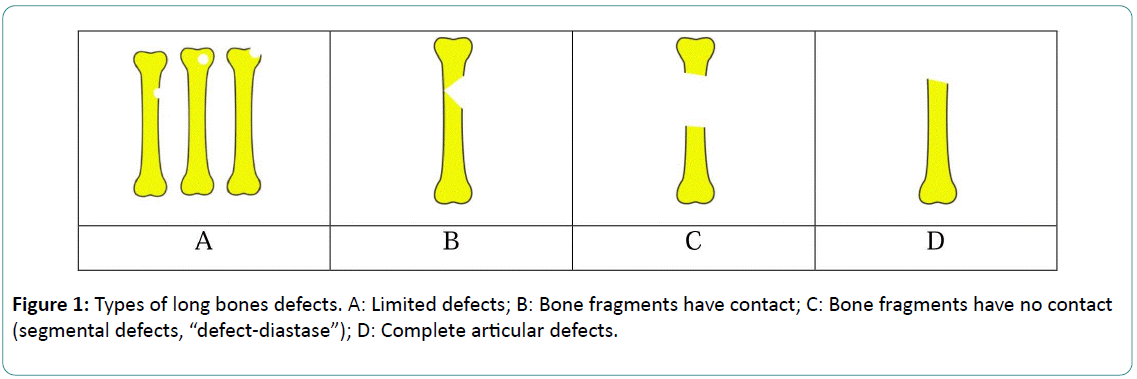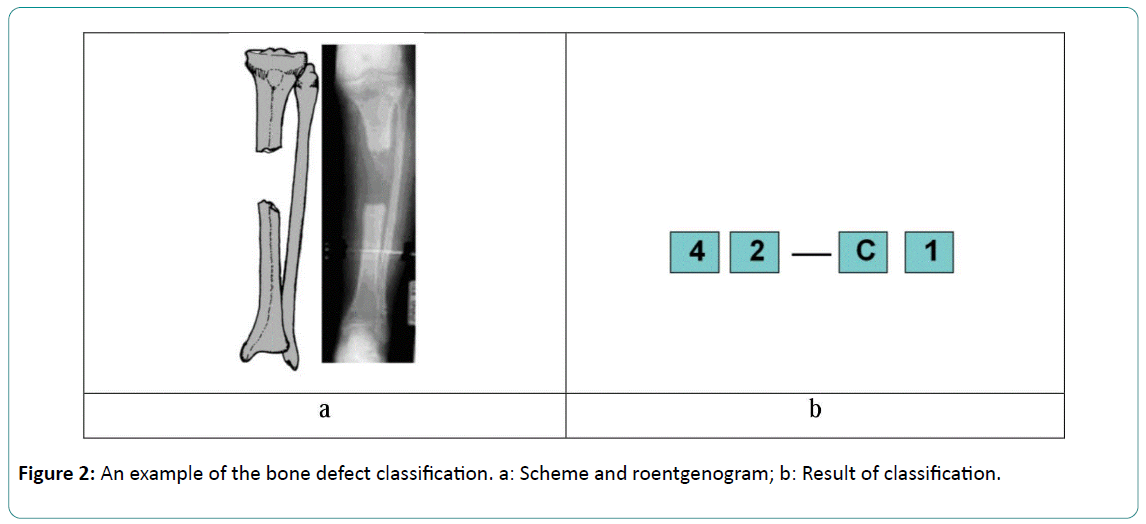Long Bone Defect Classification: What It Should Be?
Leonid Solomin and Theodor Slongo
DOI10.4172/2469-6684.100016
Leonid Solomin1,2* and Theodor Slongo3
1Vreden Russian Orthopedic Institute, St. Petersburg, Russia
2St. Petersburg State University, St. Petersburg, Russia
3University Children's Hospital, Bern, Switzerland
- Corresponding Author:
- Leonid Solomin
Professor of Orthopaedic Surgery
Vreden Russian Orthopedic Institute
St. Petersburg-195427
Russia,
Tel: +79045193989
E-mail: solomin.leonid@gmail.com
Received date: May 10, 2016; Accepted date: May 11, 2016; Published date: May 17, 2016
Citation: Leonid Solomin,Theodor Slongo Long Bone Defect Classification: What It Should Be? Bone Rep Recommendations. 2016, 2:1. DOI: 10.4172/2469-6684.100016
Copyright: © 2016 Solomin L, et al. This is an open-access article distributed under the terms of the Creative Commons Attribution License,which permits unrestricted use, distribution and reproduction in any medium, provided the original author and source are credited.
Abstract
Keywords
Long bone defects; Classification
Introduction
Dr. Maurice E. Muller said that classification is useful only if it considers the severity of the bone lesion and serves as a basis for treatment and for evaluation of the results. Very useful and practical Muller-AO of long-bone fractures classification was developed on this principle [1]. Unfortunately, the Developed in Ilizarov Kurgan Center classification are intended only for use of the Ilizarov method [2-4]. The other group of classifications [5-9] designed to determine the optimal option of revision arthroplasty.
Aim
To develop universal classification of long bone defects.
Methods
The principles of Muller-AO of long-bone fractures classification were used: from simple to complex, with an alphanumeric designation of a particular type of pathology.
Results
The defects of each bone segment are divided into four types and with further subdivision into three groups and their subgroups generating a hierarchical organization in triads (Figure 1).
A - Limited defects (<20%)
A1 - Diaphyseal
A2 - Metaphyseal
A3 - Epyphiseal
B - Bone fragments have contact
B1 - Full contact with the anatomical shortening
B2 - Limited contact without anatomical shortening
B3 - Limited contact with anatomic shortening
C - Bone fragments have no contact (segmental defects, “defect-diastase”)
C1 - Segmental defects without shortening
C2 - Segmental defects with shortening
C3 - Subtotal defects
D - Complete articular defects
D1 - Epiphyseal
D2 - Epimethaphyseal
D3 - Epimethadiaphyseal
D4 - Amputation
Like in Muller-AO fractures classification numerical designation of bones and segments are used (Figure 2). In angular deformity true shortening (defect) should be determined after modeling deformity correction. Bone defects can be associated with soft-tissue defect, infectious process,neuro-vascular disorders, deformation of the segment, devitalisation of bone fragments, etc. In these cases additional appropriate classifications, including developed by the AO, should be used.
Conclusion
The proposed classification allows identifying priority treatment methods. For example, for "A" different kinds of free bone grafting, dependent on degree of pathology. For "B" free and vascularized grafting. For "C" a variety of Ilizarov techniques. For "D" arthroplasty and prosthetics. Undoubtedly, the development of methods bone defect treatment will require improving classification that has been happening with the Muller-AO fractures classification.
References
- Ruedi TP, Murphy WM (2000) AO Principles of Fracture Management.
- Ilizarov GA, Devjatov AA, Larionov AE (1977)Treatment of infected tibia defects by Ilizarov apparatus.
- Makushin VD (1987) Treatment of patients with tibia bone defectswith Ilizarov device.MD Thesis, Perm p: 475.
- Shevtsov VI (1996) Defects of the lower limb bones. Shevtsov VI, VD Makushin, LM Kurgan p: 504.
- Dorr LD (1986) Bone grafting for tibia defects in total knee arthroplasty. Clin Orthop 205: 153-165.
- Bargar WL (1992) A classification of bone deffects in revision total knee arthroplasty. Knee Society Interim Meeting, Philadelphia pp: 176-192.
- Engh GA (1997) The management of bone defects in revision total knee arthroplasty. Instr Course Lect 46:227-236.
- Clatworthy M (2003) Management of bone defects in revision total knee replacement. The adult knee, Philadelphia: Lippincott, Williams and Wilkins pp: 1455-1463.
- Huff TW (2007) Management of bone loss in revision total knee arthroplasty. JArthroplasty22: 32-36.
Open Access Journals
- Aquaculture & Veterinary Science
- Chemistry & Chemical Sciences
- Clinical Sciences
- Engineering
- General Science
- Genetics & Molecular Biology
- Health Care & Nursing
- Immunology & Microbiology
- Materials Science
- Mathematics & Physics
- Medical Sciences
- Neurology & Psychiatry
- Oncology & Cancer Science
- Pharmaceutical Sciences


